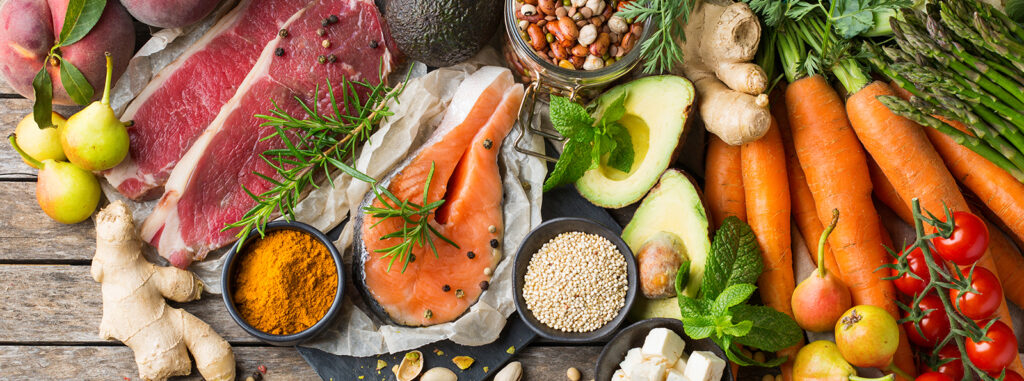ARTICLE AT A GLANCE
Dr. Aloiya Earl, MD
As the author of several studies showing how we develop dietary habits, Dr. Kelley Scanlon once found that infants who don’t eat fruits and vegetables still won’t eat them as much as six years later. By then, the preference to avoid the foods is ingrained in them.
It’s much easier to teach children healthy eating habits early than it is to correct unhealthy habits later. Children especially can become addicted to refined sugars and eating patterns that predispose them to crave processed foods.
It’s tough to break out of that cycle and reset their minds to crave nutrients instead.
As with learning foreign languages, children are more adept at building a foundation of healthy eating habits and healthy relationships with food if they’re exposed to the concepts early in life.
How to Jump-Start Healthy Eating
As soon as children transition from breastfeeding or formula into trying table foods — typically around age 1 or 2 — you should introduce them to a variety of nutrient-dense options.
Most children will go through a picky eating stage, and it’s tempting to give them only what you know they’ll eat. But even when they refuse at first, it’s important to continue offering more than just macaroni and cheese and chicken fingers. They might pick around the colorful vegetables and stick to what they know, but in time the phase will pass, and they’ll try them.
Until then, these 10 strategies will be key to encouraging them to expand their palates and enjoy healthier, more nutrient-rich foods with benefits they’ll feel throughout their lives.
1. Keep food natural.
The closer food is to its natural state, the better. For instance, cereal comes from wheat or corn, but it goes through several processing stages that sap its nutritional value before it looks like cereal. Compare that to bananas, potatoes, or eggs, which can be quickly traced from their origins to your child’s plate with most or all of their nutrients intact.
2. Teach children to trace the source.
Bananas are fruits that come from trees. Carrots are vegetables and rice is a grain, both of which grow from the ground. Teaching them where most foods come from shows them to be aware of what they’re putting into their bodies. It’s easier to do this with whole foods than it is with processed foods such as a chocolate brownie cake that comes wrapped in plastic.
3. Don’t talk diets around children.
Children learn a lot from their parents, so talking about diets can teach them the wrong lessons. Instead, focus on emphasizing a healthy lifestyle, with treats allowed in moderation, and letting children eat intuitively. They can grow accustomed to enjoying traditional foods at birthday parties, family gatherings, and holidays without feeling guilty, then bouncing back to their healthy habits.
4. Don’t call food good or bad.
Kids are highly impressionable. Associating food with guilt can lead to body shame, emotional issues, and unhealthy choices. One of the most important lessons to teach them is that all food is part of an overall lifestyle in which balance and variety are key. If they want to eat a chocolate brownie cake, that’s OK. They should enjoy it. They just need to know to balance it by not indulging again for a while.
5. Label all food as fuel.
Instead of guilt, teach children that healthful food is what gives them the energy they need for school and sports. Vegetables aren’t good and brownies aren’t bad; one just gives them more energy to do the things they love. As they grow older, teach children about the long-term health benefits associated with healthy foods, including reduced risks of chronic issues such as cardiovascular disease.
6. Show them how simple healthy eating is.
Healthy eating doesn’t have to mean elaborate recipes and fancy grocery stores. There are countless great recipes available online, such as fruit popsicles and peanut butter chocolate chip hummus dip, that you can make easily and without spending a small fortune. You can also find plenty of videos on YouTube with instructions for quick, easy, nutritious, and kid-friendly meals.
7. Teach them where to find the best foods.
Most of the ingredients that you’ll need for those simple recipes can be found at your local grocery store. Bring your children with you and stick mainly to the perimeter of the store, where the produce and whole foods are usually displayed. On weekends, explore farmers markets, orchards, and food festivals. Over time, conveniently finding the healthiest foods will become a habit.
8. Show how convenient it is, too.
Healthy foods are also convenient with a little prep work. Instead of serving plastic-wrapped convenient snacks, prepare healthier options and keep them refrigerated or frozen. Make smoothie bags that have everything you need so you can just add water or juice, blend it, and enjoy. Measure out bags of dried nuts and fruits, dark chocolate chips, and veggies with small containers of hummus for dipping.
9. Make meal prep fun.
Children are more inclined to try healthier foods when they have a hand in preparing it. Including them in meal prep at an early age also helps set them on a path to learn to cook their own healthy meals by the time they head off to college. Make games out of cooking, play their favorite songs, set up stations, give them tasks to complete, and reward them for completing each one.
10. Use colors to teach variety.
Colorful foods not only make meals more visually interesting, but they also make them more nutrient-dense. Foods of different colors contain different micronutrients, and all of them are essential. For example, red, blue, and purple fruits contain antioxidants such as anthocyanins that limit cell damage, while white fruits and veggies contain polyphenol compounds — antioxidants known for lowering heart disease and cancer risks.
It’s best to teach these healthy habits at a young age, but it’s never too late to start. Whether your child is a newborn or a teenager, it’s worth shifting to healthier eating and a healthier lifestyle as soon as possible.
Dr. Aloiya Earl works with University of Alabama athletics as a Sports Medicine Fellow. She received her Bachelors of Science in Exercise Science from the University of South Carolina, her M.D. from The University of Toledo College of Medicine, and she completed her residency training at The Ohio State University. She is a member of the American Medical Society for Sports Medicine.













